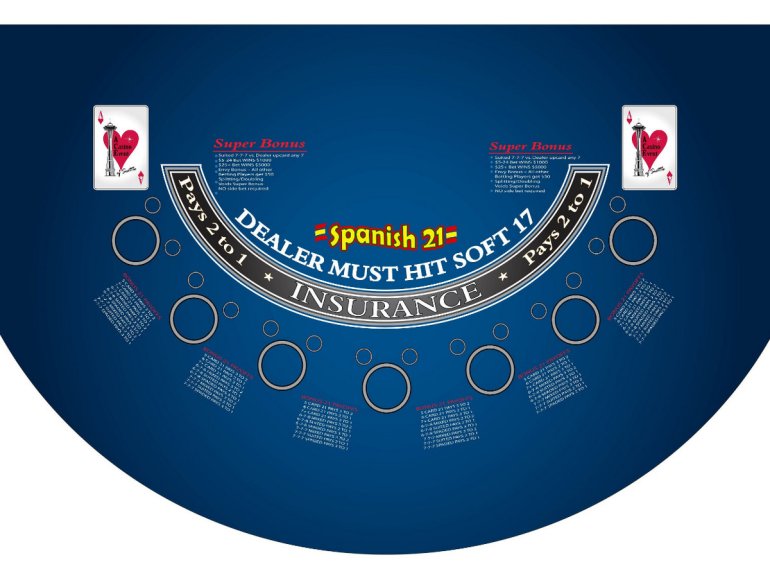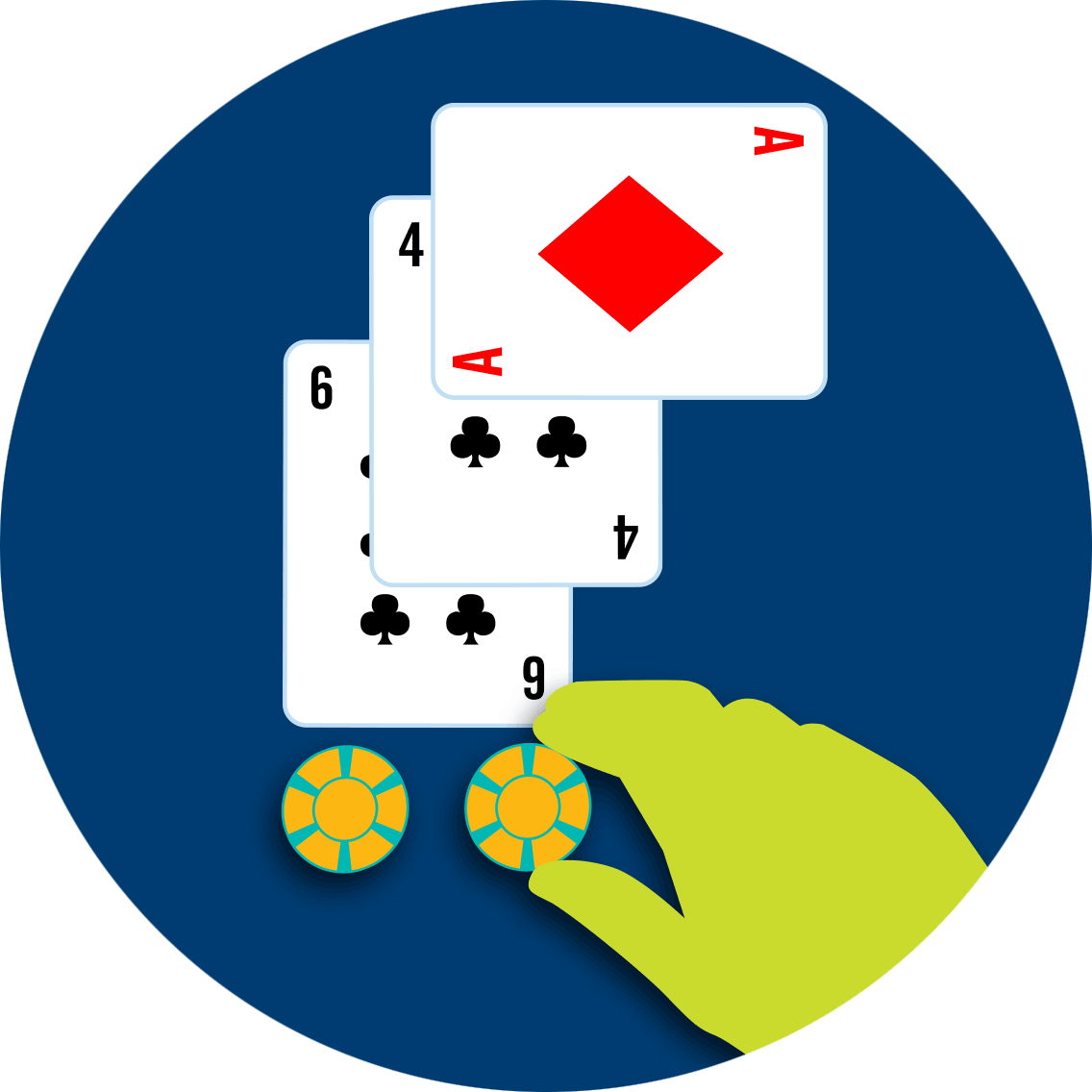What Is Spanish 21
Spanish 21 is a Blackjack variant often found in online casinos across the globe. It’s quite popular, and you can locate it in the major US and Asian online casinos. The game uses six to eight decks; it depends on the table. An interesting thing about the shoe is that i t misses all 10s. Barcelona will face Athletic Bilbao in the final of the Spanish Super Cup on Sunday. Barcelona vs Athletic Bilbao prediction, preview, team news and more Spanish Super Cup 2020-21. Chapter 6 Spanish Body Parts (21 cards) 2020-06-28 18 INTERACTIVE ACTIVITIES (45 cards) 2019-10-11 18 Spanish greetings (9 cards) 2021-01-20 18. The strategy for such blackjack variation as Spanish 21 was developed by many different blackjack experts, including Arnold Snyder and John Grochowski: actually, these two blackjack authors were the most successful ones who perfectly described Spanish 21 Strategy in a way understandable for average players. These two authors - Arnold Snyder and John Grochowski are considered to be the masters.
Blackjack is one of the most popular casino games, and has been for decades. It’s so popular that many other games based on blackjack and side bets for the base game have been created.
Some of these games are better than others, but one that you should know more about is Spanish 21.
Spanish 21 uses most of the same rules that you can find at the blackjack table, but it combines all of the best rules and adds a few more bells and whistles.
The only down side is that the game uses a Spanish deck of cards instead of a normal 52 card deck.
A Spanish deck only has 48 cards. All of the 10’s have been removed from a regular deck. This is bad because it reduces your chances of making a total of 21. In a regular blackjack game this would make the house edge so high that the game would be unplayable.
But Spanish 21 has so many good rules that it makes up for the lack of 10’s in the deck. You can learn more about the house edge in the first section, but the bottom line is that in many casinos the Spanish 21 game offers a better game than the blackjack tables.

Here’s a list of the main rules for Spanish 21:
- Uses a Spanish deck with 48 cards
- Dealt from a six deck or eight deck shoe
- You always win with a total of 21
- Your natural blackjack beats a dealer blackjack
- Late surrender is allowed
- You can split aces multiple times
- You can double after splitting
- You can double down on any number of cards
- In some casinos you can double down a second time
- You can double down after splitting aces
- You can surrender after doubling down
- If you get six, seven, and eight or three sevens of different suits it pays 3 to 2
- If you get a six, seven, and eight or three sevens of the same suit it pays 2 to 1
- If you get a six, seven, and eight or three sevens of spades it pays 3 to 1
- If you get a five card 21 it pays 3 to 2
- If you get a six card 21 it pays 2 to 1
- If you get 21 with seven or more cards it pays 3 to 1
- If you get a suited seven, seven, seven it pays $1,000 or $5,000 – Bets of $25 and higher get $5,000 and lower bets receive $1,000
The first time you play Spanish 21, especially if you’re used to playing blackjack, can be a little confusing. But once you get used to the game with all of the good rules that you wish blackjack used, you won’t have any problems.
Spanish 21 is basically the same game that’s called Pontoon in Australia. You can also find games using different names that have slight rules variations around the world. If you find a game that looks the same under a different name, make sure to compare the rules. One or two rule changes can change the game in a big way, and alter the house edge enough to make it a poor choice.
Most Spanish 21 rules are the same from casino to casino. The only big rule variation you need to be aware of is whether the dealer stands or hits on a soft 17. When the dealer stands on a soft 17, the house edge, if you use the best strategy, is around .4%. Few games in the casino offer an edge of less than a half percent.
If you play where the dealers always hit on soft 17, the house edge is close to .75%. This is still a low house edge, but most blackjack games are a little better. But, there’s one more Spanish 21 rule variation to be aware of.
The good news is if the dealer hits a soft 17, but you can double down a second time on the same hand, it brings the house edge down to almost the same as when the dealer stands on soft 17. If the rule isn’t clear and you double down and have a situation where you want to double down again, you should try to double down a second time. The worst that can happen is the dealer won’t let you.
Here’s an example:
You receive a five and a three, and the dealer has a six face up. You double down and get a two. This gives you a total of 10, which is even better for doubling down. Slide out another bet and say double down again.
Blackjack games have several rules variations that alter the house edge. Some blackjack games have rules combinations that create a lower house edge than Spanish 21, but many games have an edge of .5% or higher. This makes Spanish 21 a better bet in some casinos.
What Is The 21 Spanish Speaking Countries
One thing you need to understand about the house edge in Spanish 21 and blackjack is that you have to use the best strategy in order to keep the edge as low as you can. You can pick up strategy cards for blackjack in most casino gift shops, but finding the best strategy for Spanish 21 is harder.
Here are a couple resources to help you get started:
Katarina Walker wrote the best book about the game, titled “The Pro’s Guide to Spanish 21 and Australian Pontoon.”
Here are a few more things to know about Spanish 21 and the house edge.

You should never take insurance while playing Spanish 21. It’s a bad bet at the blackjack table, and is even worse when playing Spanish 21. The insurance bet is really a separate bet on whether the dealer has a down card worth 10.
Because all of the 10’s have been removed, the dealer has a lower chance to have a 10 value card, so the edge on the insurance wager is almost 25%.
The match the dealer side bet pays 4 to 1 if one of your first two cards is the same rank as the dealer’s up card if the casino uses a six deck shoe, and 3 to 1 if they use an eight deck shoe.
If one of your first two cards matches both the rank and suit of the dealers up card, it pays 9 to 1 using a six deck shoe, and 12 to 1 using an eight deck shoe. You can win on both cards if they both match the dealer’s up card.
Here’s an example:
You’re playing an eight deck shoe and the dealer is showing a five of spades. You receive a five of spades and a five of diamonds. You win 12 to 1 for the five of spades and 3 to 1 for the five of diamonds. This is a total of 15 to 1.
Though the match the dealer side bet looks good when you get a win, in the long run it’s a bad bet. The same bet can be found as a side bet on some regular blackjack games.
How many times have you been playing blackjack, got 21, and still didn’t win because the dealer ended up with 21 too? I don’t know about you, but this is one of the things that irritate me the most.
It just seems like if you get 21, which is what blackjack is often called, you should win no matter what. But when you tie the dealer with 21 in blackjack it’s a push.

Of course, natural blackjacks are harder to get in Spanish 21 because of the lack of 10’s, but you still have all of the face cards available to match an ace.
Surrender is one of the best rules you can find at the blackjack table, but very few offer it. Late surrender is a rule that lets you fold your hand and take back half your bet after the dealer checks his or her cards. This can be advantageous, especially when you have a hard total like 16 against a dealer ace or face card.
Some Spanish 21 games even let you surrender after doubling down. This is a great rule for you, because sometimes when you double down you get a terrible card.
Here’s an example:
You have a five and a six and double down. You receive another five, giving you a hard total of 16. A hard 16 is the worst hand to have, and in this situation you doubled your bet to get it. The ability to surrender after doubling down is a big positive for you.
4 – Double Down after Split
In most blackjack games you don’t have the ability to double down after splitting. But in Spanish 21 you can. This is great for you especially when split aces.

Here’s an example:
You bet $20 and receive a pair of aces. You split them by sliding out another $20. Then you double down on each ace, sliding another $20 out for each hand. Instead of betting $20, now you have $80 on the table with a good chance to win on each hand.
One of the rules I look at when deciding on a blackjack table is the ability to re-split aces. When you get a pair of aces and split them, sometimes one or both of the aces gets another ace. If you can re-split aces, you can split the second pair of aces again.
Sadly, most regular blackjack games don’t allow re-splitting aces. But it’s a regular rule in Spanish 21, so you can always re-split aces.
6 – Double on Any Number of Cards
The ability to double down in profitable situations is one of the reasons that blackjack has a small house edge. But in regular blackjack you can only double down on your first two cards. In Spanish 21 you can double down on any number of cards. This is a big advantage.
If your next card gives you a total of 10 or 11 you have to take another card, and you have a good chance of drawing a card that gives you a total of 18 to 21. In Spanish 21 you can double your wager by doubling down after you draw an extra card or two.
Here’s an example:
Your first two cards are a two and a four. This is a hard total of six. This isn’t good, so you take another card. The new card is a five, giving you a hard 11. In blackjack you have to take another card while only risking your original bet.
But since you’re playing Spanish 21 you slide out another bet equal to your first bet and double down and you have twice as much in play with a good chance to win the hand.
Many experienced blackjack players have learned that you can use care counting techniques to beat the game. Dozens of books have been written about how to beat blackjack using different counting systems, and many players try it.
Though it looks complicated at first, learning how to count cards isn’t really hard. It just takes a great deal of time and practice to get good at it. The casinos have learned that card counters can hurt them, so the casinos watch for card counters.
When casinos look for card counters, it’s called heat. Blackjack games are watched more by the pit and security department than any other game. Professional blackjack card counters have to disguise their play and move from table to table and from casino to casino to try to avoid being caught.
Some of the smartest advantage gamblers have learned that Spanish 21 can be counted and the casinos don’t tend to watch the games as close as they do blackjack games.
Spanish 21 Blackjack
The basic counting principles are the same for blackjack and Spanish 21, but it’s more complicated overall to count Spanish 21 because of the removal of the 10’s from the deck.
The best way to learn more about how to beat Spanish 21 by counting is the book by Katarina Walker I mentioned in the first section, titled The Pro’s Guide to Spanish 21 and Australian Pontoon.
You still need to be aware that the casino can make you stop playing if they think you’re counting Spanish 21. You can usually get away with wider bet spreads, which is a big deal for counters, but you still need to do everything you can to keep the casino in the dark.
Spanish 21 is a fun game to try if you’re getting bored with blackjack. It uses all the good rules you find at different blackjack games, and eliminates the bad ones. Even using decks missing the 10’s, Spanish 21 is one of the best games in the casino when you consider the house edge. In many ways, it’s even better than blackjack.